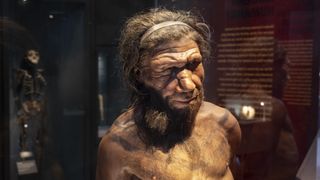DNA and Genes

Genes are the blueprints of life. Genes control everything from hair color to blood sugar by telling cells which proteins to make, how much, when, and where. Genes exist in most cells. Inside a cell is a long strand of the chemical DNA (deoxyribonucleic acid). A DNA sequence is a specific lineup of chemical base pairs along its strand. The part of DNA that determines what protein to produce and when, is called a gene.
First established in 1985 by Sir Alec Jeffreys, DNA testing has become an increasingly popular method of identification and research. The applications of DNA testing, or DNA fingerprinting within forensic science is often what most people think of when they hear the phrase. Popularized by television and cinema, using DNA to match blood, hair or saliva to criminals is one purpose of testing DNA. It is also frequently used for other benefits, like wildlife studies, paternity testing, body identification, and in studies pertaining to human dispersion.While most aspects of DNA are identical in samples from all human beings, concentrating on identifying patterns called microsatellites reveals qualities specific and unique to the individual. During the early stages of this science, a DNA test was performed using an analysis called restriction fragment length polymorphism. Because this process was extremely time consuming and required a great deal of DNA, new methods like polymerase chain reaction and amplified fragment length polymorphism have been employed.The benefits of DNA testing are ample. In 1987, Colin Pitchfork became the first criminal to be caught as a result of DNA testing. The information provided with DNA tests has also helped wrongfully incarcerated people like Gary Dotson and Dennis Halstead reclaim their freedom.
Latest about Genetics

How does CRISPR work?
By Kamal Nahas last updated
CRISPR is a versatile tool for editing genomes and has recently been approved as a gene therapy treatment for certain blood disorders.

Why genetic testing can't always reveal the sex of a baby
By Maggie Ruderman, Kimberly Zayhowski published
Gender and sex are more complicated than X and Y chromosomes.

Restless legs syndrome tied to 140 'hotspots' in the genome
By Emily Cooke published
A new study has identified more than 140 novel genetic risk factors associated with the development of restless legs syndrome.

'Fossil viruses' embedded in the human genome linked to psychiatric disorders
By Sahana Sitaraman published
Certain stretches of ancient viral DNA in the human genome may increase the chances of developing three neuropsychiatric disorders.

New genetic cause of intellectual disability potentially uncovered in 'junk DNA'
By Emily Cooke published
Mutations in "junk DNA" could be responsible for rare genetic cases of intellectual disability, new research hints.

The same genetic mutations behind gorillas' small penises may hinder fertility in men
By Nicola Williams published
Scientists have used the gorilla genome to probe for previously unknown genes that may contribute to infertility in men.

The mystery of the disappearing Neanderthal Y chromosome
By Emily Cooke published
Non-Africans carry around 2% Neanderthal DNA in their genomes — yet there's one chromosome where DNA from our ancient cousins is nowhere to be found.

'More Neanderthal than human': How your health may depend on DNA from our long-lost ancestors
By Emily Cooke published
Neanderthals and humans mated millennia ago, and their legacy lives on in us today. Here's how.
Sign up for the Live Science daily newsletter now
Get the world’s most fascinating discoveries delivered straight to your inbox.


